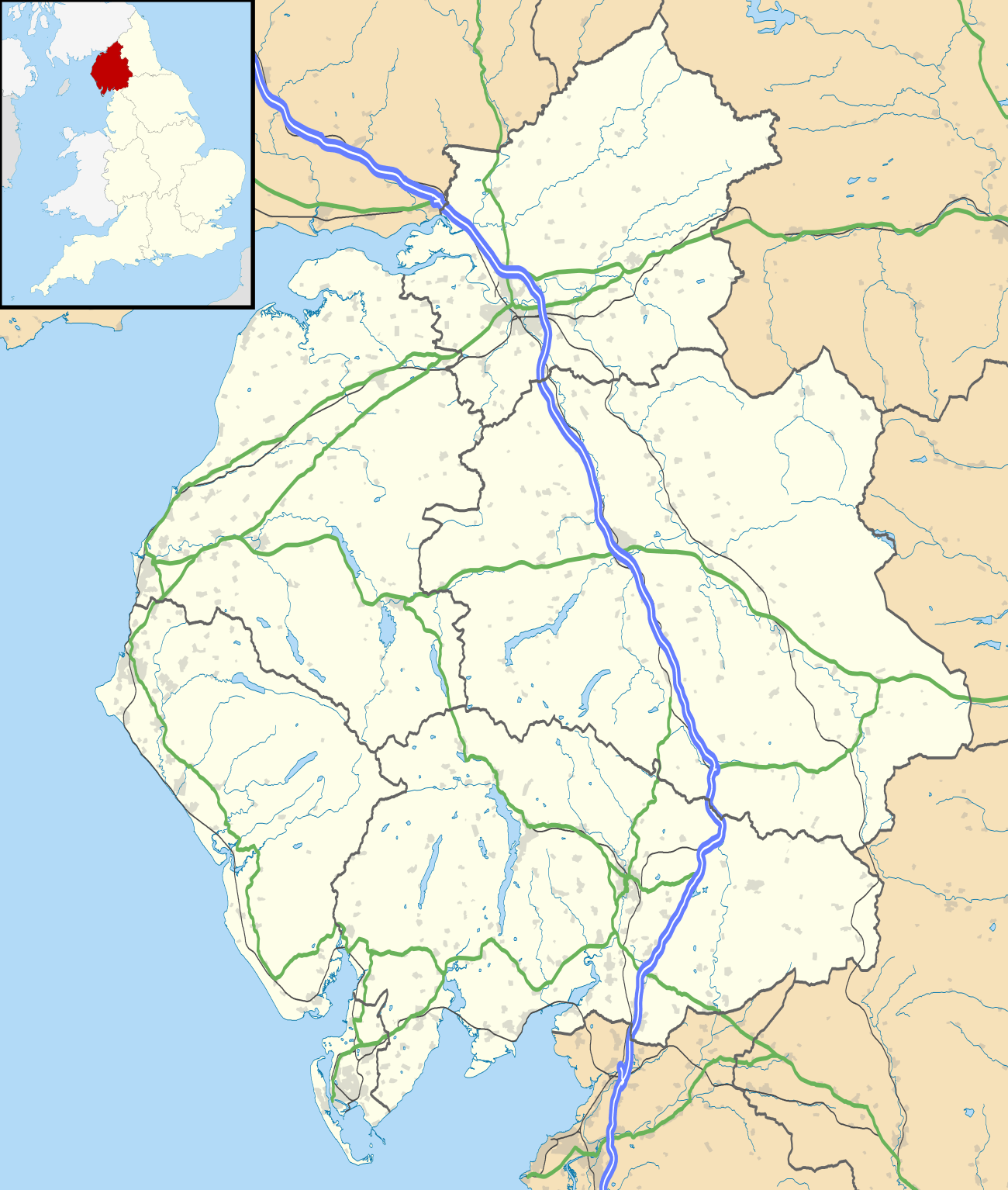Croglin
Croglin is the name of a village, beck (stream), and grange in Cumbria in England. Croglin is a quiet picturesque fellside village between the Pennines and the River Eden, about 14 miles (23 km) south-east of Carlisle. The surrounding land is used for agriculture, mainly sheep. A small river, Croglin Water, flows through the valley down into the River Eden.
| Croglin | |
|---|---|
 Croglin | |
 Croglin Location within Cumbria | |
| OS grid reference | NY572471 |
| Civil parish | |
| District | |
| Shire county | |
| Region | |
| Country | England |
| Sovereign state | United Kingdom |
| Post town | CARLISLE |
| Postcode district | CA4 |
| Dialling code | 01768 |
| Police | Cumbria |
| Fire | Cumbria |
| Ambulance | North West |
| UK Parliament | |
A village has existed in this location for a long time and may originally have been two separate hamlets. There has been a church on the current site since the Norman period, but the present building, dedicated to St. John the Baptist, was erected in 1878 to a design by J. Hewison of Edinburgh. There is a post office, which opens two mornings a week, and a pub, the Robin Hood.
Because of its proximity to the Scottish borders, the village was often raided by the Border Reivers in the 15th century. The lower two stories of a pele tower still survive, incorporated into the house formerly known as Croglin Vicarage, now The Old Pele, a testament to that need for defence.[1]

There is a tale of a vampire associated with the area. It has many versions, and some have accurate local details, many of which are available on other sites.
A toy manufacturer, Croglin Toys, was set up in the village in 1980, but now operates from nearby Lazonby.[2] A small dairy in the area, Thornby Moor Dairy, founded in 1979, has developed a type of cheese made from ewe's milk, known as Croglin Cheese.[3]
Etymology
The name Croglin is[4] probably a compound of a Middle English word crōk, "bend", ultimately derived from Old Norse krókr, and OE hlynn, "torrent".[5] Though the location of Croglin favours this explanation,[6] also possible is derivation from Brittonic crǖg, "abrupt/isolated hill"[6] and lïnn, "a pool" is also possible (c.f. Welsh crug-llyn).[6]
References
- The Old Pele, British Listed Buildings Online, retrieved 2 June 2011
- "Children give Eden firm their "most playable toys in Britain" vote", Cumberland & Westmorland Herald, 14 December 2007, retrieved 7 December 2009
- Thornby Moor Dairy, UKTV, retrieved 7 December 2009
- Ekwall, Eilert (1922). The place-names of Lancashire. Manchester: Chetham Society.
- Armstrong, A. M.; Mawer, A.; Stenton, F. M.; Dickens, B. (1950). The place-names of Cumberland. English Place-Name Society, vol.xx. Part 1. Cambridge: Cambridge University Press. p. 183.
- James, Alan. "A Guide to the Place-Name Evidence" (PDF). SPNS - The Brittonic Language in the Old North. Archived from the original (PDF) on 13 August 2017. Retrieved 25 November 2018.
External links

- Cumbria County History Trust: Croglin (nb: provisional research only - see Talk page)